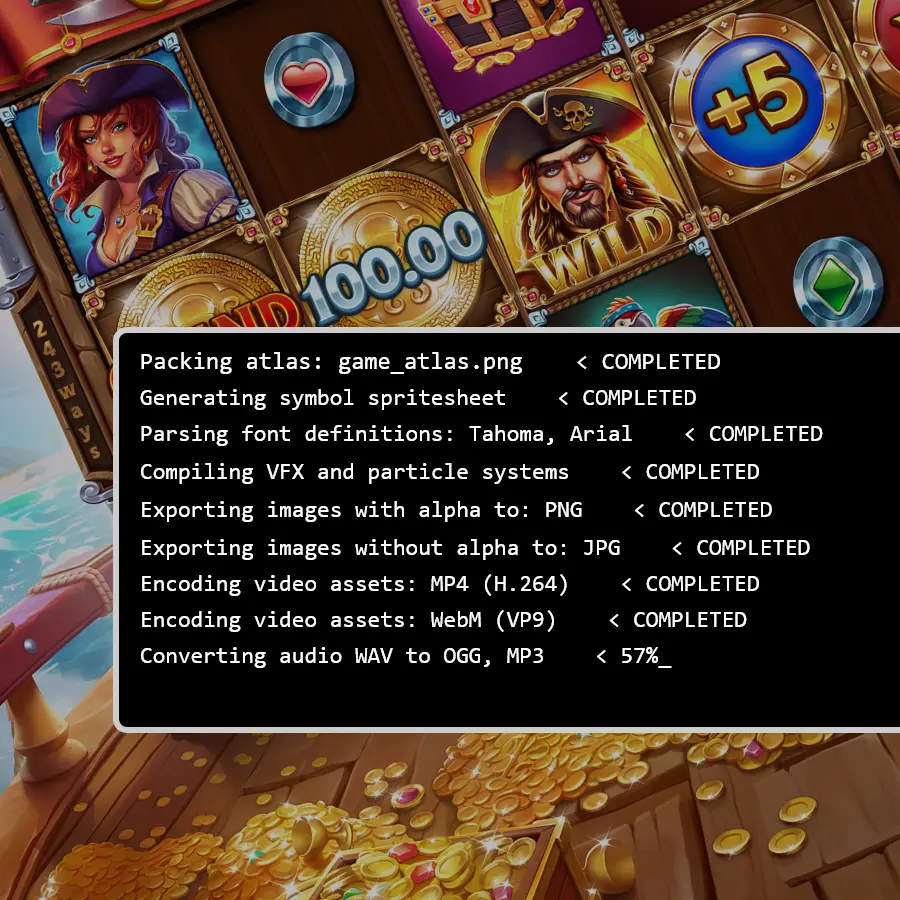Continuous content
In today’s slot development landscape, delivering fresh content regularly — often on a monthly cycle — is the new standard. Slots have grown beyond standalone games into dynamic, repeatable content that players expect to engage with continuously. This demands a framework that makes delivery timelines and budgets predictable, while still leaving plenty of room for creativity.
Slot games might look simple. But making them feel good — responsive, polished, alive — requires a lot under the hood. After five years of refinement, this engine works in dozens of slot games. And it’s one of the quietest, most important reasons we can build with both speed and intention.
Predictable Delivery
This framework exists to accelerate development — not just in the sense of shipping faster, but in making better decisions sooner. It helps teams scope confidently and iterate rapidly without getting bogged down in plumbing. But just as important, it sets a quality baseline. Every animation is consistent. Every scene behaves the way we expect. Audio syncs. Transitions feel tight. None of that’s magic — it’s just experience, baked into code.
What it’s made of
The engine's front-end (app) part is built entirely in TypeScript, composed of ~300 modular classes. These modules aren’t meant to be abstracted away — they’re used directly by teams across the studio, giving us consistency and control without sacrificing flexibility.
Rendering System
Sprite batching, primitive drawing, texture management, and a scene graph for optimized rendering.
Audio System
Web Audio-based playback with low-latency support for buffered and streaming audio; includes a sound factory for reusable resources.
Video Integration
Classes for video playback, compositing, and synchronization with rendering flow.
Input Handling
Unified support for mouse, touch, and keyboard input, including complex gestures like swipes and long-presses.
Resource Management
Asset pooling and caching across textures, audio, fonts, and video, designed for efficiency and scale.
Scene Management
Flexible scene graph hierarchy with specialized objects for sprites, text, video, and interactive elements.
Animation and State
Keyframe animation support combined with state machines and action sequences for orchestrated behaviors.
Text Rendering
TrueType and bitmap font support with layout controls and performance tuning.
Particle System
Lightweight engine for authoring and rendering particle effects (sparks, bursts, trails).
UI Components
Reusable UI primitives: buttons, toggles, scrollable containers, layout managers, and more.
Framework availability
The CGS Multimedia TypeScript Engine isn’t a standalone product. It’s used internally to deliver slot games — seamlessly integrated into the final product. Our customers receive it as part of the game delivery, free of charge.
The only limitation is that the framework itself cannot be extracted or repackaged for resale. Beyond that, we’re open to conversations about licensing for studios or teams interested in leveraging its capabilities.
The gaming industry thrives on innovation and partnerships. Whether you’re interested in our services, exploring new game concepts, or discussing other business opportunities, we’re always open to conversations. Drop us a line!

